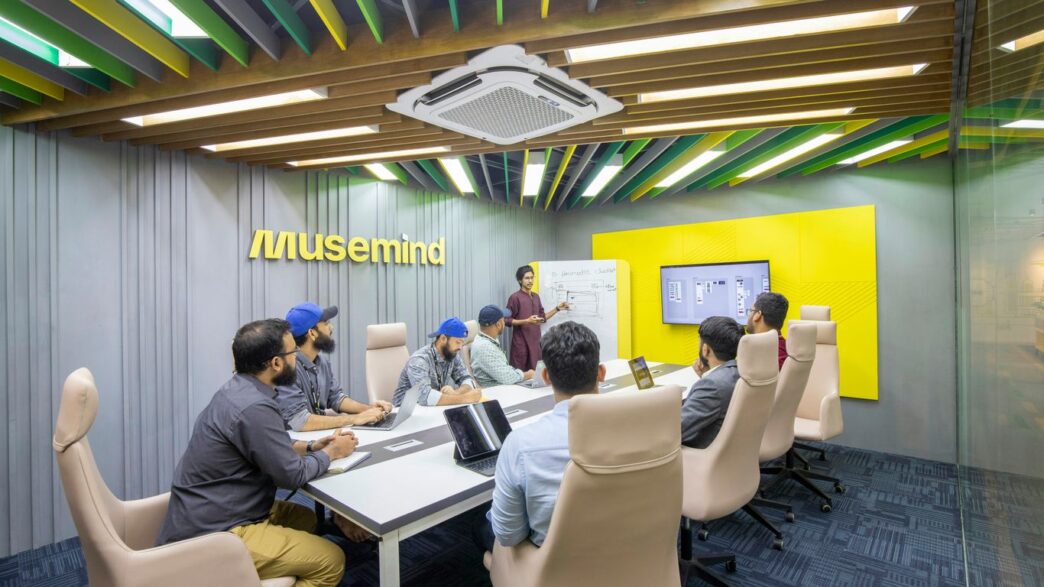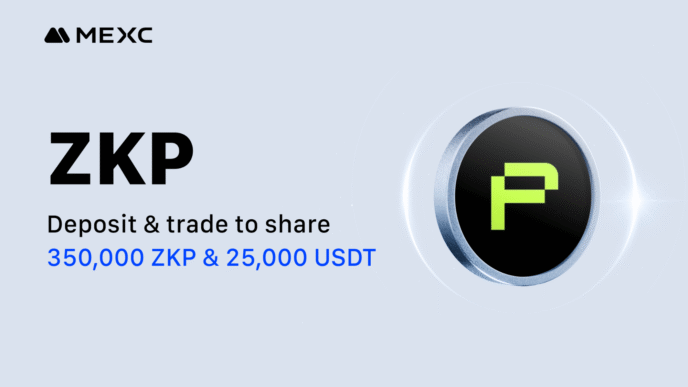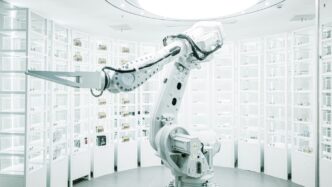Latest Funding Rounds and Growth of AI Startups
Record-breaking Investments Fuel Innovation
AI startups keep drawing huge checks from investors, with funding rounds breaking records nearly every month. In 2025, everyone’s eyes are still glued to big players like OpenAI and Anthropic, but there’s a fresh wave of newcomers getting billion-dollar valuations right out of the gate. This year isn’t about hype alone; investors want signs of real income and practical solutions too. There’s been a noticeable shift in what gets funded—companies building useful tools for engineers, healthcare, language learning, and day-to-day business work, all with real customers and revenue in tow.
Here’s a quick look at some standout deals from 2025 so far:
| Startup | Funding Raised | Latest Valuation | Focus Area |
|---|---|---|---|
| OpenAI | $50B+ | $90B+ | Foundation models |
| Anthropic | $31B | $40B | AI safety, large models |
| xAI | $12.1B | ~$24B | General AI, new models |
| Anysphere (Cursor) | $100M+ | $2.5B | AI coding assistants |
| Speak | $100M+ | $1B | AI language learning |
| Writer | $326M | ~Undisclosed | Business productivity tools |
| World Labs | $291.5M | N/A | Physical reasoning AI |
Emergence of Billion-dollar AI Unicorns
Unicorns used to be rare, but now the AI herd is growing fast. What’s different in 2025? Many of these billion-dollar startups are actually making money—some even reach $100 million in yearly revenue only a few years after launching. That’s a good sign for the whole industry; flashy demos alone aren’t enough anymore.
A few things that stand out:
- The time between a startup’s founding and unicorn status has shrunk dramatically—sometimes as little as two years.
- New unicorns crop up across the world, not just in Silicon Valley.
- Rapid customer growth—language apps like Speak already claim millions of users globally.
Rapid Search Growth Indicates Rising Interest
If you look at what folks Google and discuss online, it’s clear that public excitement is surging. Startups like DeepL, Scale AI, and Peak have all seen their search numbers rocket. Some are reporting over 500% search growth in just the last five years. “Exploding topics” trends are now clustered around AI, with language tools, productivity apps, and automation platforms leading the way.
A few ways to spot rising stars:
- Explosive search growth—some startups see 5-10x more interest in only a year
- Early, eager user bases—apps with millions of downloads even before full public launches
- Broad exposure on social channels and news outlets—AI startups routinely trend on tech Twitter and LinkedIn
All these signals? The next wave of AI startups isn’t just coming—it’s already here, reshaping what business and day-to-day work look like.
Revolutionizing Industries: AI Startup Impact Stories

Artificial intelligence isn’t just a buzzword; it’s already changing entire industries in ways we couldn’t have predicted five years ago. In 2025, AI startups are not only making headlines, but they’re delivering real results in places like hospitals, corporate offices, and even chat platforms. Here are some of the most striking examples.
Healthcare AI Solutions Transform Patient Care
AI in healthcare isn’t just hype anymore. Startups are making tools doctors, nurses, and patients actually use every day.
- Automated diagnostic assistants can now review and summarize medical scans in less than a minute, helping doctors spot serious issues much earlier.
- AI-driven platforms like OpenEvidence provide fast, research-backed insights to medical professionals right at the point of care.
- New digital healthcare assistants help with patient intake, reminders for medications, and triage, making life a bit smoother in busy clinics.
Doctors are reporting noticeable reductions in administrative workloads and, in many cases, faster, more reliable diagnoses.
Table: Notable Healthcare AI Startups in 2025
| Startup | Focus Area | Impact |
|---|---|---|
| OpenEvidence | Medical search & summaries | Improves access to up-to-date research |
| PathAI | Diagnostic imaging | Boosts accuracy in pathology reporting |
| Babylon Health | Virtual consultations | Expands access to remote healthcare |
Next-gen Enterprise Tools Enhance Business Operations
Businesses across the board are adopting AI-powered platforms to automate boring, repetitive tasks and help teams focus on bigger challenges:
- AI tools like Writer automate report writing, marketing emails, and customer communication, shrinking turnaround times from hours to minutes.
- Data-driven analytics platforms help supply chain and sales teams predict demands, cut waste, and make better pricing decisions.
- Decision Intelligence systems from startups like Peak bridge the gap between tech and business, helping organizations predict losses and spot opportunities with real-time data.
Some companies have seen measurable benefits:
| Company | Area Changed | Improvement Measured |
|---|---|---|
| Peak | Inventory Mgmt | 16% reduction in stockouts |
| Writer | Internal Comms | 30% decrease in manual effort |
| Scale AI | Data Operations | 2x faster model deployment |
AI in Language and Communication Platforms
Cross-lingual barriers and communication headaches are shrinking fast, thanks to startups specializing in natural language technology.
- DeepL, an advanced translation startup, now supports over 30 languages—users say its accuracy often surpasses older tools like Google Translate.
- Language tutoring platforms like Speak use AI to adapt lessons on the fly to each learner’s pace and preferred style, making language acquisition faster and more natural.
- Customer service, HR, and even legal teams are turning to AI chatbots that can handle routine questions in dozens of languages, freeing up humans for trickier issues.
In a world that’s always connected and often remote, AI-powered communication tools make global collaboration a lot less stressful.
AI startup impact stories aren’t just about flashy promises. In 2025, they’re about what’s really working – and why everyone from healthcare systems to fast-growing companies are taking these tools so seriously.
Breakout Companies Leading the AI Startups News Cycle
Many AI startups are constantly making the news in 2025, but a few have managed to pull ahead of the pack. These breakout companies aren’t just building hype—they’re shaping what comes next in machine learning, automation tools, and industry-focused platforms.
Generative AI Advancements from DeepL and Anthropic
If you haven’t seen DeepL’s new upgrades or heard about Anthropic’s AI leaps, you probably missed the biggest stories in AI this year.
- DeepL: Famous for translating text across over 30 languages, they’re now setting records for quality and speed in neural language models. In May alone, DeepL brought in another $300 million, hitting a $2 billion valuation. Their rapid growth is easy to spot—just look at their expanding user base and monthly traffic numbers.
- Anthropic: Known for their safety-first approach, Anthropic raised the bar with next-gen large language models. Their focus is not just on scaling up intelligence, but keeping things predictable and secure for enterprise adoption.
| Company | Year Founded | Funding (2025) | Valuation | Focus |
|---|---|---|---|---|
| DeepL | 2009 | $315M | $2B | Neural machine translation |
| Anthropic | 2021 | $7.3B | $19B | Safe LLMs, enterprise tools |
Visionary Model Builders Shape Market Direction
Let’s be real, without solid models, most of the apps and agents we talk about are just smoke and mirrors. The companies building these models are setting the pace:
- OpenAI – Still the biggest fish with unmatched funding. Their releases are always headline news.
- xAI – Led by Elon Musk, xAI is making waves and picking up billions in flush capital, angling to compete with the core leaders.
- Thinking Machine Labs – Still operating under the radar, but everyone’s watching them for their bold claims in general AI.
- World Labs – Their team wants to give AI a sense of space and physical understanding. Not just chat—actual context.
Industry-specific Leaders in Robotics and Data Management
Some startups aren’t chasing general AI—they’re hammering away at real-world problems for specific industries, and it’s paying off:
- Peak (Manchester, UK): Their AI platform connects inventory, price, and sales data for businesses, helping teams act smarter without a team of developers. They’re growing fast—over $100 million in Series C, with an explosion in search traffic.
- Scale AI (San Francisco, CA): They power the training data behind self-driving cars, language models, and even new AR/VR. In 2025, they’ve surpassed $100 million in revenue with a customer base of 1,000 businesses.
- Nabla: Healthcare’s quiet transformer—pairing clinical workflows with smart AI assistants.
- Augury: Manufacturing’s friend for predictive maintenance, reducing downtime with AI-powered sensing.
To sum up, the startups that make headlines right now are:
- Breaking ground in language AI (DeepL, Anthropic)
- Building foundational models (OpenAI, xAI)
- Tackling hard industry problems (Scale AI, Peak, Nabla)
- Collecting massive investments to keep fueling their momentum
It isn’t just hype—these companies are setting benchmarks for what AI can look like in regular work, not just theory or flashy demos.
Legal and Ethical Challenges Facing AI Startups

The spotlight on AI startups has brought a host of legal and ethical hurdles that just can’t be ignored anymore. Companies keep reaching new technical milestones, but every new headline brings another question about the law, data, and just who’s responsible when things go sideways.
Copyright and Data Scraping Controversies
Copyright lawsuits are everywhere in AI news lately. Startups are facing legal threats over how their models were trained, especially if they scraped the internet or used protected materials without permission. Here’s how this shakes out:
- Multiple lawsuits from artists, writers, and media outlets are pending.
- Some startups claim it’s all fair use since the data is public, but that’s unclear until courts decide.
- AI-generated content in music, voice cloning, and images is under heavy fire from creators arguing for their share or recognition.
Notable Examples (2023–2025)
| Startup/Platform | Legal Issue | Who’s Suing |
|---|---|---|
| Anthropic / OpenAI | Use of copyrighted books, articles, and images | Authors, artists, publishers |
| Midjourney / Runway | Art generators accused of copying artist works | Artist collectives |
| Cohere / Perplexity | Publisher data used in language models | News publishers |
| ElevenLabs | Voice cloning without consent | Voice actors |
| Suno | AI-generated music vs. record labels | Major record companies |
Transparency and Accountability in AI Models
People want to know how AI decisions are made, and right now, it feels like there’s a lot of secrecy. Most startups either can’t—or won’t—explain exactly how their models make certain choices or predictions. Here’s what this means in practice:
- Many businesses demand detailed documentation, but get vague answers instead.
- Regulatory authorities in the EU and US have begun asking for audits and independent reviews.
- Customers—especially big enterprise or government buyers—now ask about explainability before signing contracts.
Industry Push Towards Responsible AI Development
With so many risks, more AI companies are looking for ways to build trust and prove they’re thinking ahead. Some have started forming ethics boards or working on clearer standards. These steps are now pretty common:
- Listing out concrete rules for fair data use and privacy.
- Regularly testing AI for unexpected bias or security problems.
- Publishing code of conduct or responsible AI guidelines on company websites.
There’s also more talk about leadership responsibility:
- Who actually leads AI policy in a startup? Sometimes it’s the CTO, other times it’s a new ethics lead. Sometimes, it’s a team effort.
- Decisions about AI are moving from back rooms straight to board meetings.
It’s all a sign that legal and ethical questions are now central to every big move an AI startup makes. How these issues are handled could decide which companies stick around as the field matures.
Technology Trends Defining the AI Startup Landscape
AI startups have hit full speed in 2025, so the buzz is real if you’re following this world—even if you’re checking from the backseat of a rideshare or while making your morning coffee. Here are some trends that are actually shaping what’s happening behind the scenes.
Rise of Autonomous Agentic AI
Agentic AI systems are popping up everywhere, handling tasks with simple prompts and getting work done across business apps, emails, or scheduling. These aren’t just chatbots anymore—they’re more like digital workers glued to calendars, customer data, and workflows.
Here’s what’s pushing this trend:
- Multi-step task automation: Think of automating invoice sorting or handling basic IT help requests, start to finish.
- Workflow integration: Agents now plug right into popular enterprise software—Slack, Salesforce, Gmail—without extra setup.
- Feedback loops: Startups care about agents learning from user input, not just returning the same replies over and over.
Shift to Specialized, Vertical Solutions
General-purpose AIs get all the press, but what’s actually getting funding in 2025 is specialized software for specific industries. Healthcare, logistics, finance—name an industry, and there’s probably a handful of startups building tailored tools for it.
Why go vertical?
- Deeper domain knowledge means more accurate results in things like medical imaging or factoring insurance risk.
- Startups can build smaller models, which run faster and require less computing power.
- Adoption rates are higher when the AI speaks the customer’s language (literally and figuratively).
If you look at the money, the shift is pretty clear:
| Sector | 2023 AI Startup Funding | 2025 AI Startup Funding (est) |
|---|---|---|
| General-purpose AI | $28B | $19B |
| Vertical/Industry | $16B | $32B |
Low-code and No-code Machine Learning Tools
Not everyone who wants to use AI can code, and everyone’s busy. Low-code and no-code AI tools let regular folks drag, drop, and assemble workflows or even train custom models without needing a PhD or hours of tutorials.
- Platforms now include built-in data cleaning, pre-set "recipes," and guided model evaluation.
- Small businesses are using these tools to crunch sales data or automate back-office work.
- Startups aiming for this market make it simple for someone with a spreadsheet and a problem to tap into machine learning—no software team required.
The market is catching up to demand, and even old-school companies are getting onboard, so expect more people building with AI—technical or not.
Overall, the tech trends this year are less about showing off flashy demo videos and more about fitting AI into everyday business life. Startups big and small will probably be judged more by how useful their tools are, and less by how many viral headlines they score.
Infrastructure and Resources Powering AI Scalability
As AI eats up more of the tech headlines in 2025, it’s not just flashy startups getting all the attention. The backdrop is a totally different arms race—one for hardware, data, and cheaper ways to scale up massive AI models. While you keep hearing about chatbots and automation, the real magic (and headache) often sits in the behind-the-scenes tech.
Specialized Computing Hardware Providers
When you see AI models getting smarter at record speed, remember, it all demands an insane amount of computing muscle. There’s a growing club of infrastructure startups—names like Crusoe, Lambda, and Together AI—that have quickly built billion-dollar businesses just supplying raw computing power:
| Company | Valuation (2025) | Specialty |
|---|---|---|
| Crusoe | $2.8B | Green data centers, rentable compute |
| Lambda | $2.5B | High-performance GPU cloud |
| Together AI | $3.3B | Distributed compute, training optimizations |
- These firms are making cloud computing harder, faster, and sometimes even cheaper.
- A lot of money is flowing to whoever can provide more GPUs at a fair price.
- Demand is so high that some companies rent whole data centers just for a training run.
Reducing the Cost of Model Training
Ever since the price of training a large language model went through the roof, finding new ways to save money is all the rage. Startups across the world (DeepSeek is one example) are showing that training doesn’t always have to break the bank:
- Smarter algorithms: New breakthroughs now let models learn with less data and fewer training cycles.
- Bulk buying: Teams now cut deals for GPU time, squeezing out savings when running huge experiments.
- Open-source tools: Free software libraries help companies dodge expensive licensing fees.
It’s all about squeezing every bit of value out of expensive chips and reducing energy waste.
Decentralized Platforms and Edge AI Development
The next frontier isn’t just bigger data centers—it’s spreading AI out. There’s a new wave of platforms letting models run on a mix of smaller servers, or even on the edge (think: your phone or IoT device):
- Edge AI pushes the computation closer to where data is collected, giving faster results and saving cloud costs.
- Decentralized platforms let startups use spare computing from around the planet, not just what’s in one big facility.
- This trend means more privacy, lower latency, and fewer infrastructure bottlenecks as adoption scales.
Altogether, the infrastructure for AI in 2025 is shifting fast. The spotlight isn’t just on what AI can do, but also on how—and where—it runs, and who can make it run cheaper and faster than the next competitor.
Outlook for AI Startups in Shaping the Future
AI ROI and Measurable Business Impact
Figuring out whether an AI startup actually saves money or makes processes faster is finally starting to matter. Companies no longer want flashy demos, but real returns on any tool they bring in. Here’s how this shift is showing up:
- Startups are offering case studies showing cost savings and improved productivity over time.
- Investors often now ask for proof of ROI from founders before funding anything new.
- Businesses track before-and-after metrics, like how long it takes to process customer data or write code.
Here’s a sample comparison table (in millions, 2025 projected data):
| Startup Name | Revenue Generated | Cost Reduction for Customers |
|---|---|---|
| DeepL | $210 | $60 |
| Speak | $130 | $30 |
| Anysphere | $100 | $40 |
Expanding Ecosystems of AI Tools
More startups mean more tools, but also more ways to connect them. It’s getting easier for businesses to use several AI services at once without hiring huge tech teams.
- Companies now want products that connect easily (think API-first design).
- Startups often work together, forming partnerships or becoming part of bigger platforms.
- Open-source tools and cloud marketplaces have lowered the barrier for smaller businesses to experiment with AI.
Projected Growth in Enterprise Adoption
The big story? Enterprise use of AI is nowhere near plateauing. In fact, forecasts point to even higher adoption rates as tools get more specialized and easier to measure.
- More industries—like logistics, construction, and insurance—are adding AI startups to their roster of preferred vendors.
- AI-related revenue for startups and established firms is expected to jump from about $244 billion in 2025 to over $300 billion within the next two years.
- With major investments rolling in, the number of AI unicorns (startups worth over $1 billion) keeps climbing every quarter.
There’s a growing sense that AI isn’t just a trend, but a business necessity. Startups that can show real-world results and make themselves easy for enterprise customers to adopt will likely keep making the headlines through 2025 and beyond.
Conclusion
Wrapping things up, it’s clear that AI startups are changing fast and showing up in all sorts of industries. From tools that help doctors make sense of medical data to platforms that let anyone build computer vision apps, the range is huge. Startups like DeepL, Scale AI, and Anthropic are getting a lot of attention, but there are plenty of smaller teams making waves too. Sure, there are challenges—copyright issues, the cost of computing, and figuring out how to use AI responsibly—but the energy in this space is hard to ignore. As we head into 2025, it feels like we’re just at the beginning. New ideas are popping up every day, and it’s anyone’s guess which company or technology will be the next big thing. One thing’s for sure: AI isn’t slowing down, and the startups leading the way will keep pushing the boundaries of what’s possible.














